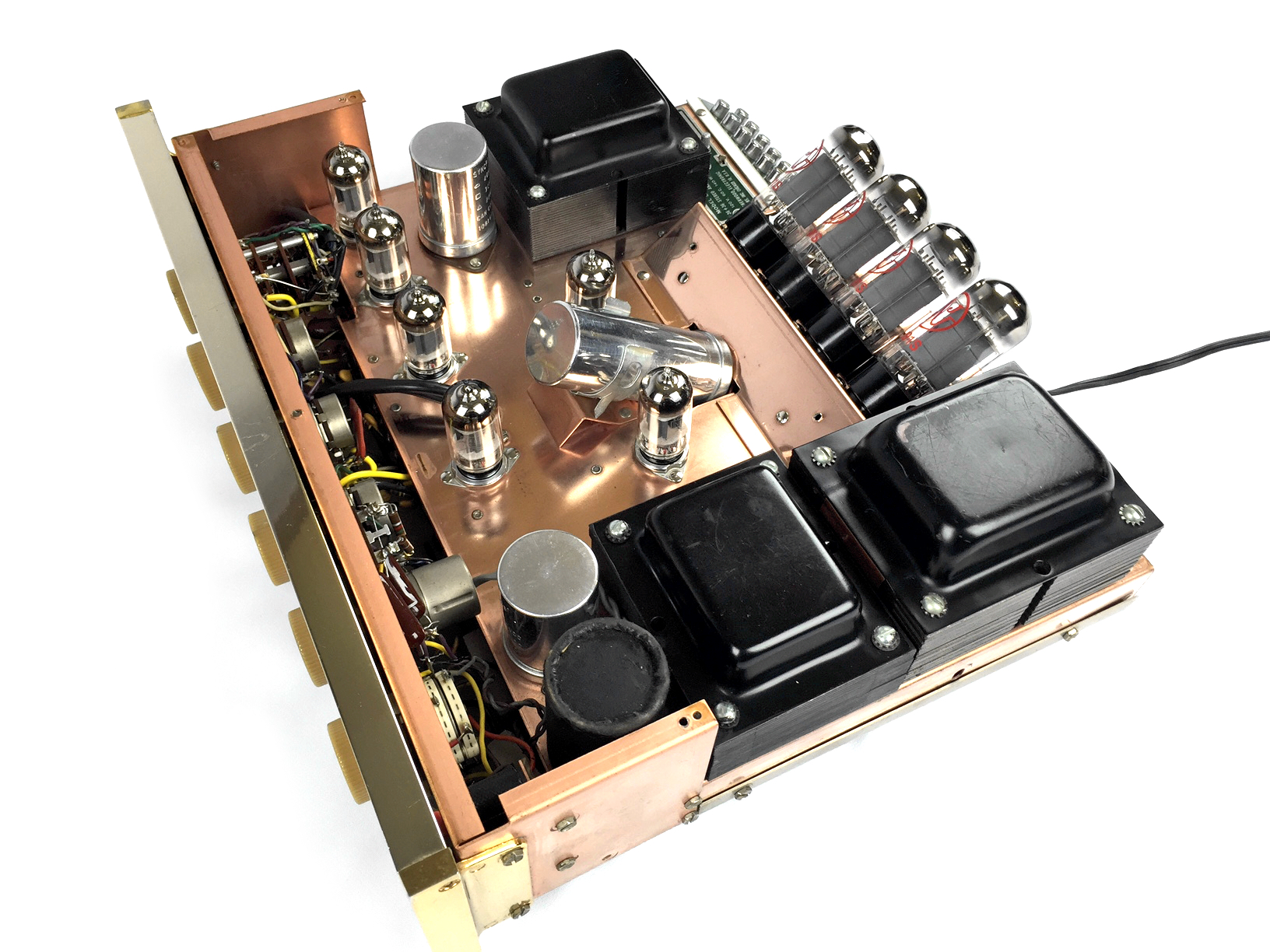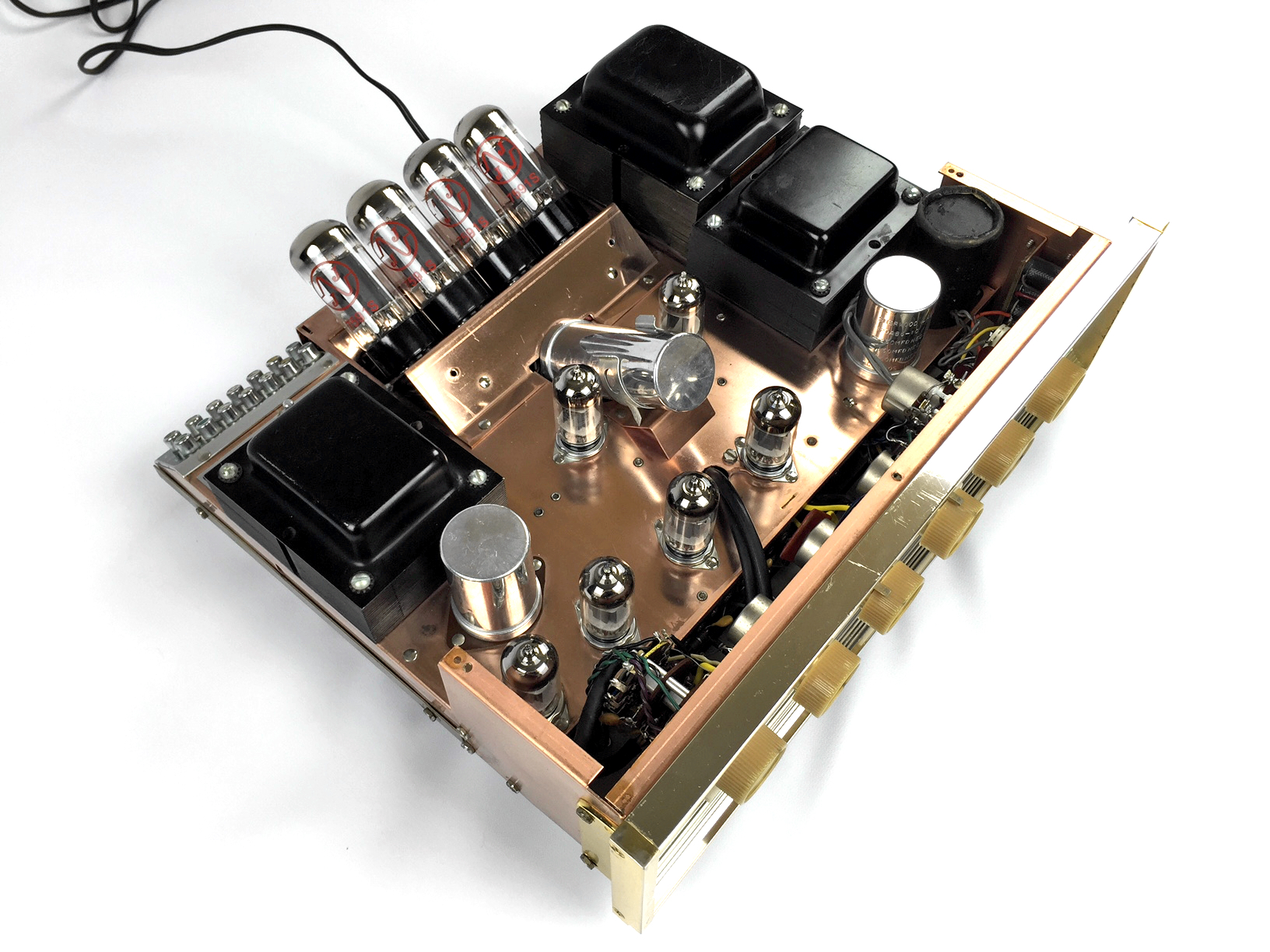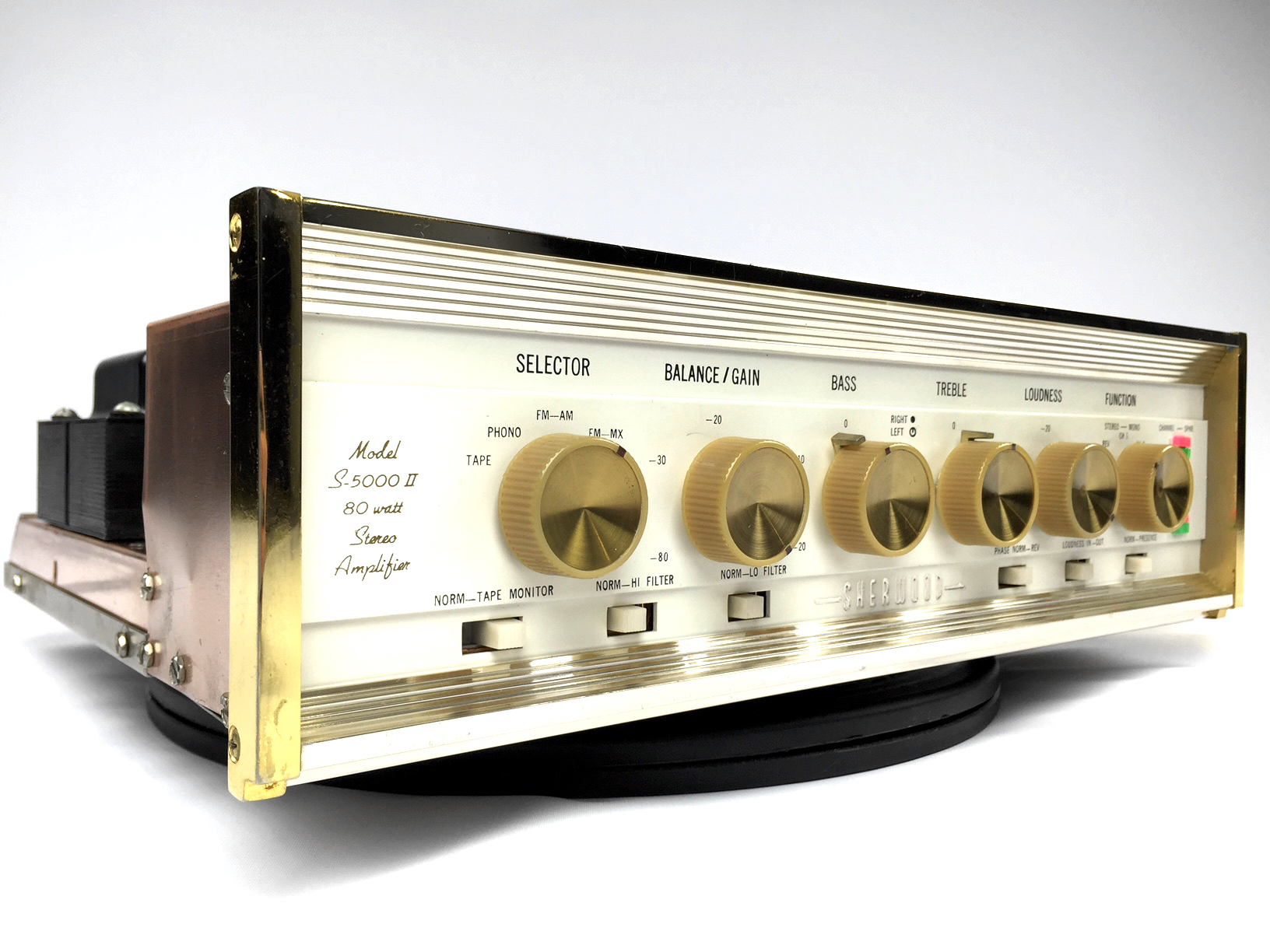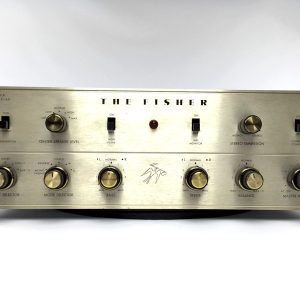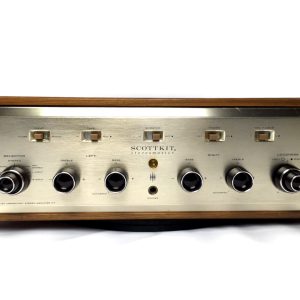Sherwood S-5000-II Gold Restoration [SOLD]
$1,200.00
One of the beautiful ‘works of art’ that Sherwood manufactured was the S-5000 II integrated stereo amplifier. Sherwood built this beauty on a copper plated steel chassis.
Out of stock
Description
A Gold Level perfectly restored Sherwood S-5000 II 40 watts per channel amplifier
The styling is pure post-modern elegance. No other amps of that era had such high styling. The nameplate says 80 watt Stereo amplifier, 40 watts per channel music power. That translates to around 28 watts RMS per channel.
This Sherwood is a fantastic sounding amp, with plenty of punch on the low end and a balanced, open midrange.
All capacitors have been replaced with types of the highest quality. For the output coupling capacitors we chose MUNDORF Supreme Series to perfectly balance the Sherwood’s treble with its full midrange. All other line amp and phono stage capacitors are premium polystyrene types.
The power supply has non-polar polypropylene filter caps and MOV inrush current limiting added.
The 12AX7’s consist of new Mullards hand selected for low noise in the phono stage, and Electro-Harmonix 12AX7-EH’s in the line amp and drivers. The output tubes are a perfectly matched quad of Electro-Harmonix 7591A-EH
Details:
- Faceplate, Knobs and Chassis in very good condition
- Re-capped and all resistors checked – 9 resistors, 17 capacitors and two rectifier diodes were replaced using top-quality components
- All switches and controls were cleaned and lubricated
- All switch contacts were hand burnished
- All controls function perfectly
- Driver balance and bias circuit critically aligned
And it’s covered by no-risk 14 day money-back satisfaction guarantee.
This video also provides a brief tour of the ‘business-end’ of our listening room, along with our A/B switching setup. The large screen is displaying our patent-pending real time spectrum display comparing the input signal and output signals while the amplifier plays music.
Our unique computer analysis measurement system allows AEA to not only measure the performance of amplifiers while they are playing music; it allows us to “see” why one amp sounds different than another, and use that insight in designing each stage of the amplifier. The results speak for themselves. Or should we say, “sing for themselves.”






